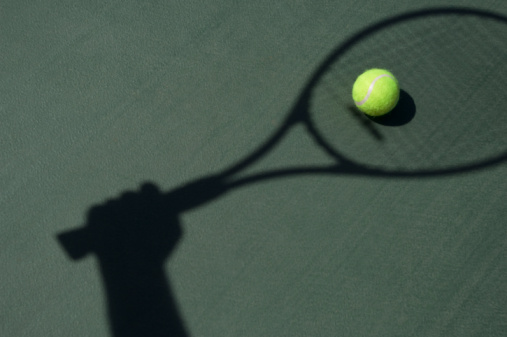Mythbusters: Will There be Enough American College Tennis Players in 10 Years?

Late in 2012, Winthrop University Basketball Coach Pat Kelsey took advantage of the fact that his team just played the number four team in the country. He had more microphones in front of him after the game than ever before and a voice that he didn’t usually get. He seized the opportunity and gave a beautiful, impassioned speech about a nationwide topic unrelated to college basketball about the Sand Hook tragedy.
Albeit, not nearly as important a topic as addressed by Coach Kelsey, I want to take this platform to voice my opinion on two topics that are costing tennis young athletes. I also have a couple of ideas on how to solve these two problems.
1. Problem number one: Mandatory QuickStart Tournaments in the 10 & Unders
Scenario: A talented eight-year old player has been using regular tennis balls. This child is ready and anxious to start tournaments. The young player looks up eight-and-under, as well as 10 & Under tournaments and sees that they are played with a slower ball and a smaller court than they are used to playing. This is already a downer because this is perceived as a “step down” and almost not even tennis. Then, when the child goes to sign up, there are barely any other kids playing in the 10 & Under tournaments. I twice signed my own child up for a tournament only to be told that there weren’t enough kids to even hold the tournament. If the intention of “quickstarting” the 10s was to get more kids to participate … it’s clearly not working. Draw sizes are commonly less than four kids and genders and ages are often mixed just to get enough kids. This is a far cry from years ago when the 10s had draws of 32 with yellow balls.
So now what you have is a choice for younger kids. Play in a “dead” event with “baby” equipment (this is how it feels to the kid at least), or play with regular balls and legitimate draws in the 12s. The problem with the latter is that most eight- and nine-year-olds aren’t ready to play “up” nor is it good for them. If the child’s club doesn’t have a good match play program, there is nowhere for the child to really compete, and inevitably, we can lose that child to a sport that they can compete in with kids who are their age. There are a whole slew of kids in the talent gap between 12-and-under Level 2 tournaments and 10 & Under QuickStart equipment whose needs are not being met.
Solution: Simple … to make the format of the tournament optional. I understand (but disagree with) why USTA National is trying to push the softer equipment. They feel it will develop the next generation of champions, as well as retain young players. It is really not their place to strong arm everybody into training and practicing the way they see fit and very few kids sign up for QuickStart. I have been in tennis for nearly 30 years now and I have yet to hear a respected voice wax poetic about USTA player development.
2. Problem number two: Unofficiated matches
My impression in talking to other coaches, unfortunately is that bad line calls and score-changing is worse than it has ever been, especially in the higher levels of the younger age groups. Maybe honest mistakes are being made, maybe the younger kids feel pressure from their parents, maybe the respect level between opponents isn’t there yet. What makes this especially frustrating is that there is very little an honest child can do about it. Compared to the team sports and most youth sports that I can think of, junior tennis is the only sport where young kids officiate themselves. I know for a fact that over the years, talented young athletes who have tried playing tennis tournaments have been driven away by bad “cheating” experiences. Parents of these kids have been as well. In other sports, the officiating is not at the forefront when summarizing an athletic competition. When getting a summary of a tennis match from a parent, one of the regular themes is the line calls of the opponent. This simply does not happen in other sports. It is a major deterrent and it must be stopped.
Solution: According to The Wall Street Journal, the 2012 Open generated $215 million dollars in revenue for USTA National. Besides building grassroots tennis, I have heard from USTA officials that getting American players into the second weekend of Grand Slams is a top priority because Americans draw better television ratings, which puts more money into the USTA’s pockets which goes back tennis. I would argue that it would be in the best interest for USTA player development and in the best interest of fairness to give the money to each of the USTA sections to put towards more referees and umpires, especially for the 12s and 14s. I honestly think this would go a long way in us developing and retaining players. If someone says the USTA doesn’t have that money, I would say the USTA should use the money that is spent on giving free coaching to the very top kids of the youngest age groups. It certainly would make me feel better knowing that the money I spent on my U.S. Open tickets was used in the name of sportsmanship, fairness, retention of players and for a greater allotment of players. This seems to me to make a lot more sense than having U.S. Open ticket revenue go to free coaching for a young child who has played a lot more than the other kids or to a child that is subjectively chosen to be a USTA favorite.






